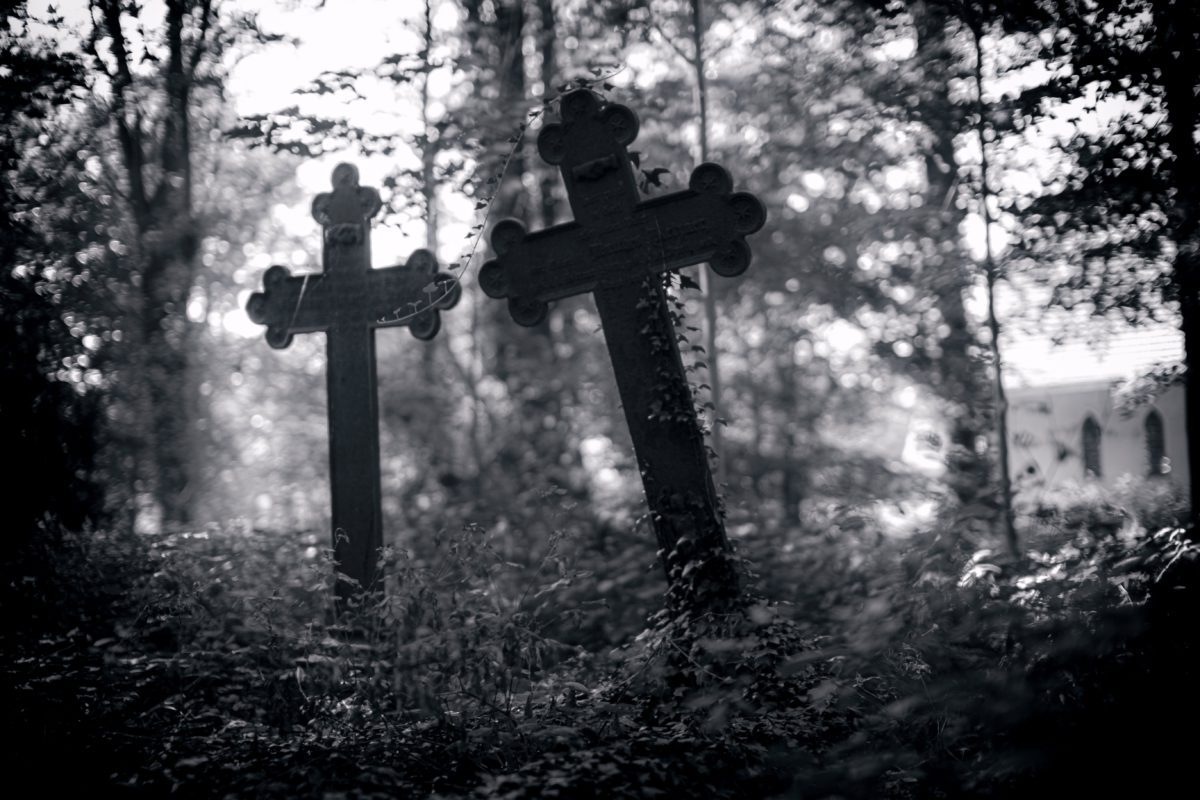
Bury Your Gays
By Mie Hald (She/Her)
Almost every Queer person knows the feeling: The hope that your favorite rainbow character of your current TV obsession will survive to the end. Unfortunately, if there’s a chance of death, the alphabet mafia is often on the line…
In recent years, it’s become more common to find media like TV shows and books where it would be unthinkable for prominent LGBTI+ characters to be killed off – could you imagine that happening in She-Ra: Princesses of Power, Heartstopper, or the Owl House? Me neither…
That said, those shows are aimed at a younger audience, and we still experience the old, tired Bury Your Gays trope way too often in media intended for adults.
But why? What is it? Why is it harmful? And where did it come from?
A brief summary
Bury Your Gays is a trope across various types of media where LGBTI+ characters get killed off disproportionally compared to their cis-hetero counterparts. Its roots run deep, but they have been nurtured by the Hays Code in old Hollywood.
There are hundreds of negative tropes centred around the LGBTI+ community in film and other media, from the depraved homosexual (a villain whose villainy lies heavily in their queerness and sinister depiction thereof) to the unfaithful bisexual and the predatory trans woman. They’re old and outdated, yet they still have an impact on the real world outside of entertainment.
Some stereotypes do find their origin in reality – there are flamboyant gay men, traumatised asexuals, and unfaithful bisexuals. Those traits may stand out, yes, but they can also apply to cis-hetero allosexual people.
And the only thing we all have in common? We all die at some point.
Often though, Queer people get killed off in media and entertainment much more than their non-Queer counterparts. In 2016, Autostraddle, a Queer womens’ website, created a list of lesbian and bisexual women who’d died on the show they appeared on. By February 2022, it was at a staggering 225 different characters. And bear in mind – these are often the only Queer characters of the show.
What the Hays?
You might have heard about the Hays Code before. It originated in Hollywood in the early 20th century. Today, we may laugh at the unsubtle and often heavily sanitised Hollywood productions, but back in the 1920s, the productions were getting racy and dealing with more and more mature topics. Overindulgence and scandals shook the industry, and organisations with various standpoints demanded order and civility – “morality”.
In the 1930s, it got worse. Desperate to get the Depression stricken public to spend their limited funds at the movies, studios lured audiences in with sex, violence, and all things “immoral”. As a counteraction, the Hays Code was conceived, named after William H. Hays (He/Him), the then-president of the Motion Picture Producers and Distributors of America (MPPDA). The code was a set of self-imposed industry guidelines to soothe the average moviegoer, forbidding numerous topics like “profanity, suggestive nudity, graphic or realistic violence, sexual persuasions and rape” (Maria Lewis (She/Her), Early Hollywood and the Hays Code). “It had rules around the use of crime, costume, dance, religion, national sentiment and morality.” (ibid.)
Despite being self-imposed, the Hays Code ruled most of Hollywood from 1934 all the way to 1968. Queerness could only be portrayed as a wicked, villainous, and morally corrupt thing on-screen, and villainy had to be punished – preferably by death.
When the perception of LGBTI+ topics slowly shifted, the narrative did too. But the trope simply swapped costume, polished its halo, and kept rolling. Instead of Queer people being killed off for their “sinful nature”, the stories were now about the Queer struggles – often resulting in death.
LGBTI+ people became victims, suffering from injustice and dying tragic deaths in a cruel world filled with hate – think Brokeback Mountain. This shift happened around the same time as the AIDS crisis, which became a prominent theme in these stories and can be found in the film Philadelphia, amongst others.
But when especially the 20th century wasn’t as “gay” a time as some would have hoped, the question is, whether it was simply a “depiction of real life”?
The problem with mass burials of LGBTI+ characters
In the allegory of the cave, the Greek philosopher Socrates talks of people chained in a cave. All they see are shadows cast from the fire, and having known nothing else their entire lives, they believe this to be the only truth. If all we see is one thing, why should we believe otherwise?
In a big part of the 20th century, the depiction of the Queer community was limited to villainy, and it was often the only exposure many people had to LGBTI+ topics. It shaped the collective mind of society.
Does this mean everyone consciously thought Queer people were cruel monsters and nymphomaniacs living miserably because of their identity? Of course not! But subconsciously, it fostered distrust. Disgust. Pity. Alienation.
They’re not like us – they’re something else.
Homophobia isn’t just active violence and open hatred. Like any other bigotry, it’s a mindset. The idea of loving the sinner, not the sin. The idea of the “sinner” being a sinner at all. The media we consume tells us about the world – that’s why it’s so important to have diverse voices and stories, for children and adults alike. But when Bury Your Gays was living its best life, there were no nuances.
Everyone dies. But for a long while, LGBTI+ people have largely been denied happily-ever-afters in entertainment. We all want to see people like us get that. We want to see that it’s okay, it’ll be alright – whatever you’re going through right now, you’ll come out of it, and you’ll be okay.
Why is this an important topic?
It’s always important to be aware of tropes, especially the harmful ones. The existence of Bury Your Gays doesn’t mean you can’t ever kill off a Queer character in fiction.
But you’ll get smarter. You’ll be able to see where media falls through, where hurtful and harmful stereotypes play in, and you’ll be able to ask critical questions.
If a TV show has an ensemble cast of 8 different characters, and only one of them is Queer, is it necessary to kill off that one specifically? Why? It’s easy to say “because someone had to die” or that it’s random, but why does it have to be the minority character?
The trope expands beyond Queerness. It can be found in all minority communities, and the more diverse a cast becomes, the easier, and harder, it gets to work around it.
Diverse voices need to live – or, at least, not evoke an almost instinctive fear that they’ll die by, at best, the end of the show the moment they step on-screen. Fiction represents the real world to some degree. To think the human mind is always smart and can filter fiction from reality is, frankly, arrogant.
Bigotry doesn’t need a lot of feeding. Healthy empathy can be nurtured instead of hatred by showing different outcomes, not just the bad ones.
The history of the LGBTI+ community isn’t just rainbows and roses. But Queer people deserve happy tales too. Or to survive the horror. To get stronger. To live.
Bury Your Gays should have been buried long ago.
Sources:
Out.com – 15 Recent, Especially Brutal, Examples of the Bury Your Gays Trope by Mey Rude, 19/02/22
Acmi.net.au – Early Hollywood and the Hays Code, Maria Lewis, 14/01/21



